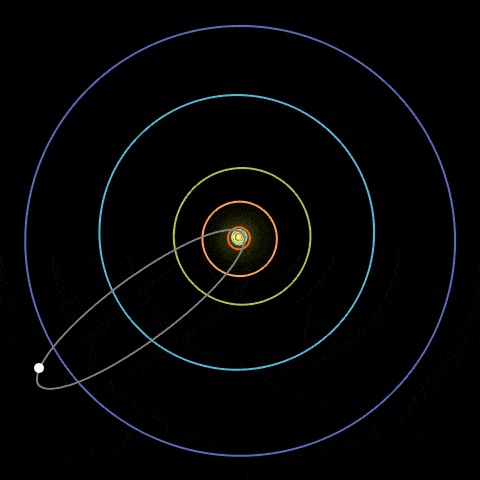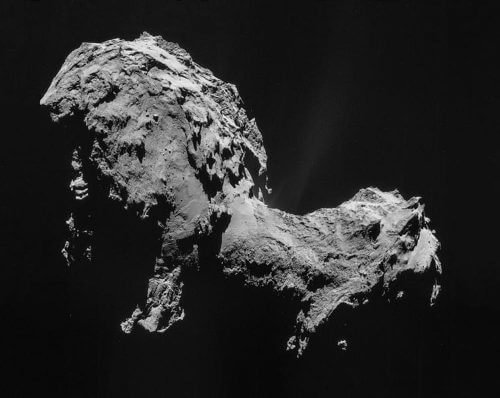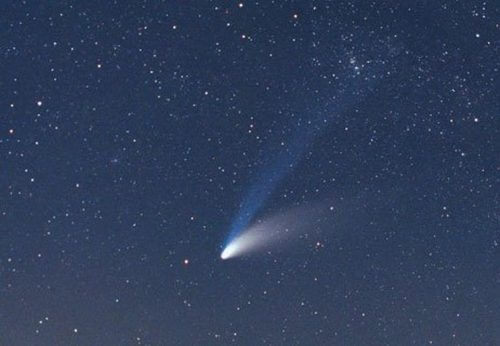Comet 46P/Wirtanen will reach its closest point to the Sun on December 16, and there is a chance that it will be visible to the naked eye. Even if it will be weaker, astronomers around the world are still waiting for it to study its properties

Author: Shannon Shmol Director, Abrams Planetarium, Department of Physics and Astronomy, University of Michigan
When comets appear in the night sky, they can cause wonder and excitement to those watching from Earth—or even a sense of impending doom. In the past, they debated what comets are - an atmospheric phenomenon, a fire in the sky, a star with a broom-like tail?
Anatomy of a comet
Through Edmund Halley's study in the 17th century of what became known as Halley's Comet, astronomers realized that comets are in our solar system. They have highly elliptical or elongated orbits around the Sun. Some have orbits that extend far beyond Pluto while some stay relatively close.
Comet 67P / Churyumov-Gerasimenko, imaged by the Rosetta spacecraft on September 19, 2014. Rosetta's original target was 46P/Wirtanen, but the European Space Agency missed the launch date. ESA / Rosetta / NAVCAM, CC BY-SA
Comet Hale-Bop has a blue dove tail and a curved dust tail. Astronomy for Beginners, Andy Roberts, CC BY

When comets are deep in the solar system, they are very difficult to observe. They are often compared to dirty snowballs, but unlike rocky asteroids, comets also contain volatile icy gases such as methane, carbon monoxide, carbon dioxide, and ammonia in addition to a core made of rock, ice, and dust.
When a comet approaches the Sun, the heat causes the volatile elements in the comet to turn from solid to gas in a process known as mirroring. When water, methane, carbon dioxide and ammonia are released, they form a cloud known as a "halo" around the nucleus as well as the long tail.
Comets actually have two separate tails: one a dust tail, the other a dovetail or gas tail. The solar wind and radiation pressure push the tails to the side away from the sun. Ultraviolet light ionizes some of the material in the tail, the charged gas eventually pointing directly from the Sun. The non-ionized dust tail still follows the path of the comet and as a result is more curved. In fact, the meteor showers we see are the result of the Earth passing through clouds of dust from comet tails, which remain even many years after the comet itself has moved away.
As a comet goes through this process, it will brighten, making for a great display for stargazers, or rather, planet-gazers.
Predicting the brightness of a comet is difficult to do. Because it is never clear how the gases will behave. Even measuring brightness is complicated. Unlike how a star's brightness is concentrated at one point from our perspective on Earth, a comet's brightness is spread over a larger area.
Astronomer Karl Virtanen discovered his comet in 1948. He was a skilled comet hunter and took many pictures of the night sky to identify the objects that move relatively fast in the sky.
Comet 46P/Wirtanen's orbit keeps it fairly close to the Sun. The farthest point from the Sun (ephelion), is about 5.1 astronomical units (AU), a little more than the orbit of Jupiter (an astronomical unit is the average distance between the Earth and the Sun, 150 million km). The greatest proximity of this comet (perihelion) is an astronomical unit, that is, relatively close to the Earth's orbit. This orbit takes about 5.4 years, and it returns to Earth's sky more often than other famous comets. Its closest point to the Sun will be on December 16, so chances are that its brightness will peak on that day.
Comet 46P/Wirtanen is an extremely active comet - a hyperactive comet - and tends to be brighter than other comets of similar size. This feature makes it a good candidate to watch. Projections show that its brightness will be 3rd magnitude, a little brighter than the faint star of the Great Bear, Merges. However, others have calculated that its brightness will be 7.6 and therefore it will not be visible to the naked eye (the faintest object visible to the naked human eye is at magnitude 6, under perfect observation conditions. The higher the magnitude, the lower the brightness, the brightest planets have a negative magnitude AB .). It remains only to wait and see how the brightness of the comet will develop in the next two days.

Spacecraft target
Even if 46P/Wirtanen does not become bright enough to view without a telescope, astronomers all over the world are still waiting for it to study it, among other things as a possible target for sending a spacecraft to it. It was the first target of the Rosetta spacecraft, but the target was changed to Comet 67/p because the European Space Agency missed the launch window.
To the article on THE CONVERSATION website
More on the subject on the science website
- The cigar-shaped object that arrived outside the solar system is an extinct comet, not an asteroid or an alien spacecraft
- Comet 67P studied by the Rosetta spacecraft: summary of findings
- Kalim Churyomov in an interview with the scientist website: "I am happy that the European Space Agency chose a comet that I co-discovered as a target for the spacecraft"
- A surprise in the findings of the Philae comet lander: complex organic materials
